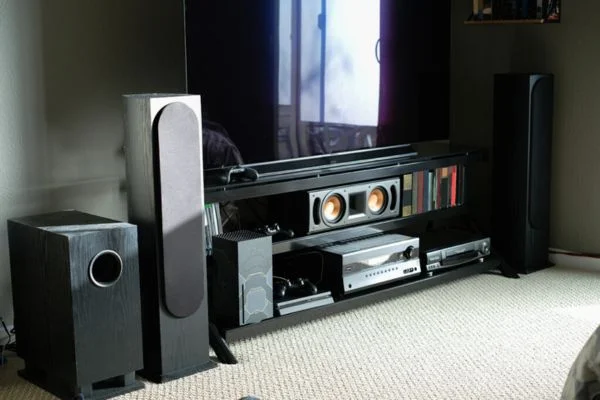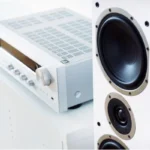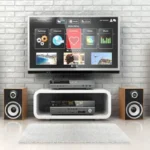If you want to upgrade your home audio experience, installing a home stereo system is an excellent way to do it. With clear sound quality and easy control over what you listen to, a good stereo can turn any room into a personal sound sanctuary. But how to install a home stereo system? In this blog post, we’ll walk through the steps of installing a home stereo system in easy-to-follow detail.
What Components Do I Need For A Home Stereo System?
Building a home stereo system can be overwhelming when you don’t know where to start. But with the right components, it’s easy to create an impressive and powerful audio setup that’ll make your house the envy of all your friends.
First and foremost, you’ll need a good receiver. This is the brain of your operation; it handles all the sound processing, connects to other components in the system, and provides power for speakers and subwoofers.
A good option is one from Denon or Yamaha that offers plenty of inputs/outputs, so you have room for expansion in your system as needed.
Next up are speakers- no stereo system is complete without them! Try to get at least two pairs of bookshelf speakers or floor-standing towers that offer around 100 watts per channel (make sure they have built-in amplifiers).
To round out your setup, add a powered subwoofer: this adds extra bass response and makes any soundtrack come alive with amazing clarity.
Finally, consider adding additional accessories such as external DACs or headphone amplifiers if desired (these allow connection directly from portable devices like laptops or phones). You can also connect CD players and turntables.
If you’re looking for a truly vintage experience! With these basic components, you should be able to assemble an excellent home stereo system capable of delivering rich sound quality with minimal effort!
Also Read: How To Add Bluetooth To Your Home Stereo System?
How To Install A Home Stereo System | Step By Step Guide

Step 1: Choose Your System
The first step is deciding what kind of system you want to install. Do you want speakers in multiple rooms throughout the house or just in one? Are you looking for wireless streaming capability or just something with an aux cable input? Decide on the size and features of your desired setup before moving on.
Step 2: Connect Your Speakers
Once you have chosen your system, it’s time to connect it. Run the speaker wire from each left/right pair of speakers back to the main receiver unit for wired systems.
Ensure the plugs fit securely into their designated ports on each end of the wire. Follow the manufacturer’s instructions for pairing your devices together for wireless systems.
Next, connect your amplifier (if applicable) and any additional components like subwoofers or equalizers according to their instructions.
Plug all components into power outlets as necessary; if running cables behind walls or through attics or crawl spaces is required, ensure they are properly supported, so they don’t come loose over time.
Step 3: Test Your System
Once everything is connected properly and plugged in where needed, it’s time for testing! Turn on all components and test your sound quality by playing music through at least two sources (e.g., CD player and streaming service).
Adjust levels and settings as needed until satisfied with results. If there are still issues with sound quality after adjusting settings, check all connections again before calling customer service for further assistance. Sometimes, loosening or tightening wires can help resolve problems if they were not properly connected initially.
Also Read: How To Set Up A Sound System In A Gym?
Which Type Of Music System Is Best For Home?
The best type of music system for a home depends on what you are looking for. If you want to listen to various styles and genres, then an all-in-one entertainment system like the Sonos Play:5 is a great choice.
It has five speakers, connecting WiFi and Bluetooth capabilities, and connects with other systems to stream audio from anywhere in your house. If you’re looking for something more specific — such as an audiophile setup — then the Marantz PM7000N integrated amplifier and bookshelf speaker combination are ideal.
This combination offers amazing sound quality at a reasonable price point. It includes four analog inputs (CD player, etc.), two digital inputs (HDMI, optical), and Bluetooth streaming capability.
The resulting sound is detailed, dynamic and immersive, perfect for serious listeners who want to take their music-listening experience up a notch!
Also Read: How To Set Up A PA Sound System In Auditorium?
Bottom Line:
Now you know how to install a home stereo system. Installing a home stereo system doesn’t have to be difficult—as long as you know what you need and take care when connecting components!
By following the steps outlined above, homeowners should be able to easily set up their home audio setup without issue in no time! Good luck!



